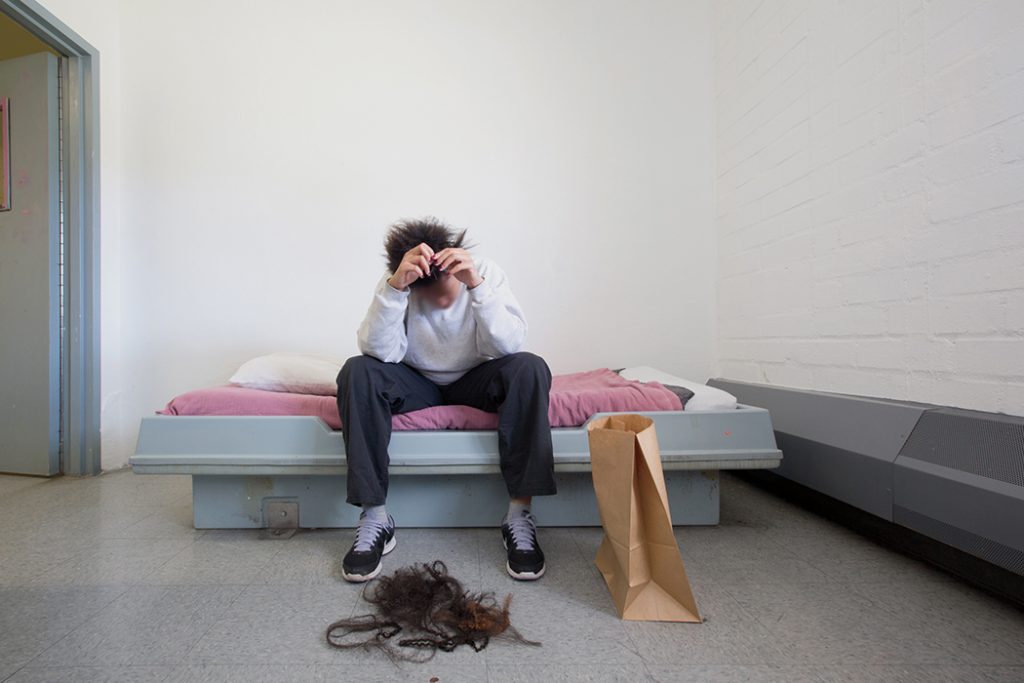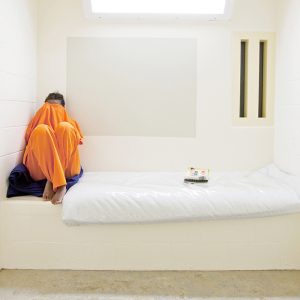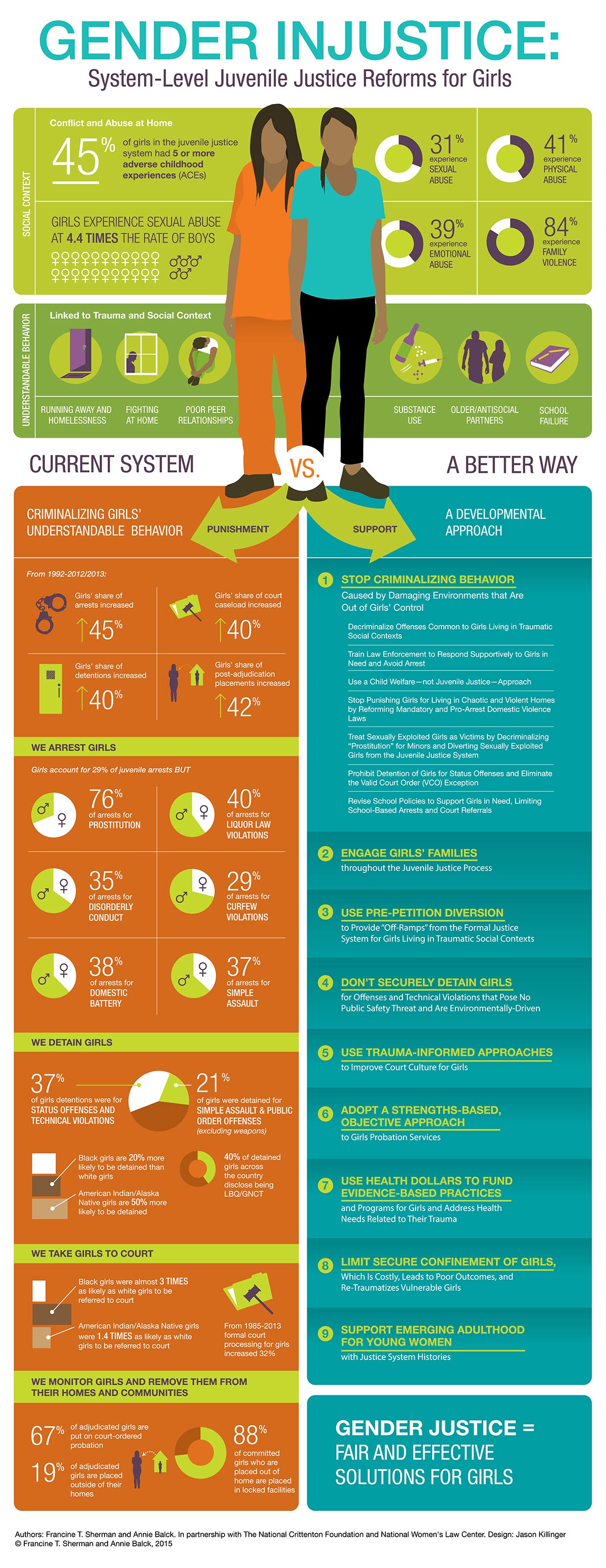According to BC Law clinical professor Francine Sherman ’80, author of a shocking new report, Gender Injustice, girls are now making up a larger share of the juvenile justice population at every stage of the process. The most comprehensive study to date on the subject shows that over the past two decades, girls’ share of the juvenile justice system from courts through incarceration saw sizable increases: arrests increased 45%, court caseloads 40%, detentions jumped 40%, while post-adjudication placement rose by 42%. These statistics are in stark contrast to overall juvenile arrests and detentions, which are declining.
“Every day in the U.S., abused and traumatized girls enter and are pushed through the justice system,” Sherman said, a nationally recognized expert on girls in the juvenile justice system who has decades of experience working with systems and youth. Sherman is founder and director of the Law School’s Juvenile Rights Advocacy Project, a national leader in juvenile rights issues for the past twenty years, and she has pioneered the kind of holistic approach to juvenile justice reform outlined in the Gender Injustice: System-Level Juvenile Justice Reforms for Girls report (see earlier BC Law Magazine feature story “Cell Shocked” on Sherman and JRAP).
The report by Sherman and co-author Annie Balck, a former BC Law JRAP student, found that females experience violence and sexual abuse in their homes and communities more than males, and their response to that abuse and violence has consequences down the road. Behaviors that are the result of trauma are criminalized resulting in arrests, court processing, detention, and incarceration for offenses that pose little or no threat to public safety–actions such as misbehavior, failing to follow rules (37% of girls’ detentions were for status offenses and technical violations), and fighting at home (21% of girls’ detentions were for simple assault). The study found that girls are referred to the juvenile justice system due to failures of other public systems such as child welfare, mental health, and education. “Rather than offering girls effective solutions, we are criminalizing them for behaviors which are the understandable response to trauma and abuse in their homes and communities,” Sherman said.
“I was 14 years old—in handcuffs with shackles on my ankles being carted to a van chain-linked to other girls,” said Tanya Robinson, advocate with The National Crittenton Foundation. “Once at the Juvenile Detention Center I was strip-searched. I felt like I was being punished for running away as a way to stand up for myself and to escape the sexual and physical abuse in my home that began when I was 6 years old. Over time some things have changed, but Gender Injustice reminds us how much work is still left to be done.”
The report, released in partnership with The National Crittenton Foundation and the National Women’s Law Center, also reveals gender inequities falling heaviest on girls of color and LBQ/GNCT (lesbian, bisexual, questioning/gender-non-conforming, transgender). It also identifies subpopulations that are particularly misunderstood by the system as girls who are pregnant or parenting, have run away, are victims of sex trafficking or in-home violence.
The report illustrates how current large-scale juvenile justice reforms are leaving girls on the sidelines and makes the case that to ensure fair and effective treatment of girls, juvenile justice reforms must help and heal, not harm girls. The report provides nine recommendations for how to do this, designed for a system that effectively meets the needs of all girls. Recommendations addressing all stages of the juvenile justice process include:
- Stop criminalizing behaviors caused by damaging environments out of girls’ control, such as “prostitution” for minors, violations of status offense orders, or fighting at home;
- Expand pre-petition diversion to address girls’ damaging environments without criminalizing them for being victims; and
- Eliminate secure incarceration of girls, which is costly and harms girls with trauma histories.
“Juvenile justice reform must include a focus on the girls in the system and the pathways that land them there,” said Lara S. Kaufmann, senior counsel and director of education policy for at-risk students at the National Women’s Law Center. “As Gender Injustice shows, girls are being arrested and detained in increasingly higher numbers, and there are concrete steps that can be taken to reverse that trend. Girls who suffer from trauma and abuse should get services, not punishment, so they can complete their education and get on a path to economic security.”
See the full report, Gender Injustice: System-Level Juvenile Justice Reforms for Girls.




